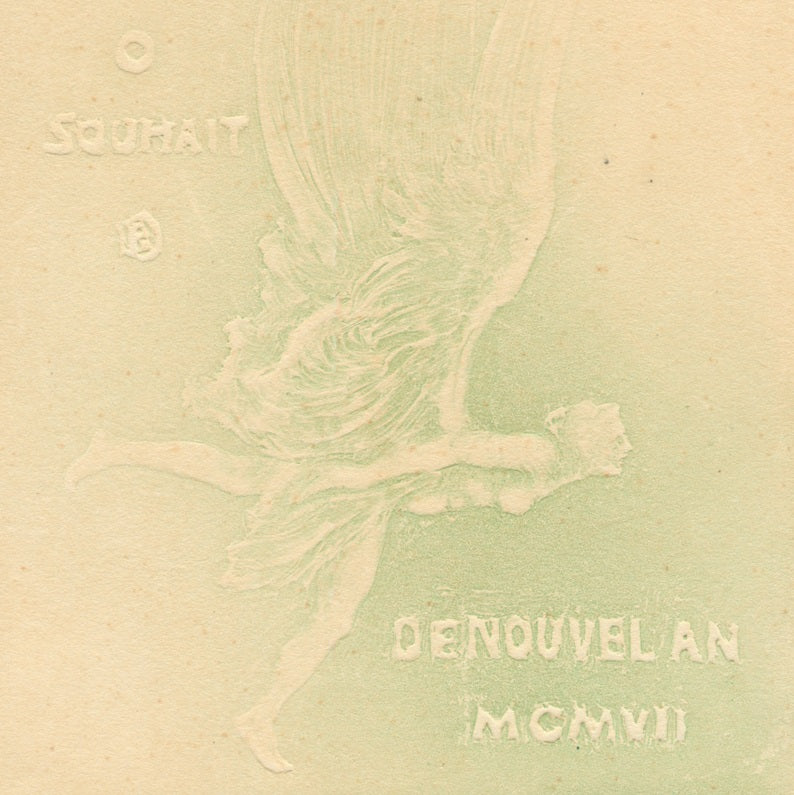
Fair Winds to You, Fortune of the New Year 1911
ROCHE, Pierre
Bon Vent pour Toi Fortune du Nouvel An MCMXI (original French title) Gypsograph on wove paper. New Years Wishes for 1911. Signed and annotated with...
View full detailsPierre Roche (1855-1922) was trained first as a painter, but made his way into the art world by becoming a sculptor and a printmaker. A few paintings and the odd interior sculpture will surface on the market at times. However, what he is known for today are his monumental sculpture and his innovative embossed prints. L’Effort in the Jardin du Luxembourg, and his Fontaine de l’Avril come to mind as sculpture. As a printmaker he is known for developing a new technique, creating plaster molds from bas-reliefs, which he inked in color by hand, and printed onto thin sheets of wet Japanese papers. Because of the fragility of the matrix used for these prints, Roche also eventually used metal plates in a similar manner. This way he was able to prints slightly larger editions, of up to 100, instead of just a handful. Roche is thus the father of what is today known as the gypsograph. His esthetic can unequivocally be called symbolistic, with nudes, the figure, plants and flowers dominating as subjects.

Bon Vent pour Toi Fortune du Nouvel An MCMXI (original French title) Gypsograph on wove paper. New Years Wishes for 1911. Signed and annotated with...
View full details
Ouvre tes Ailes o Souhait de Nouvel An MCMVII (original French title) Gypsograph on wove paper. New Years Wishes for 1907. Signed and annotated wit...
View full detailsPlease sign up for our newsletter
Email: info@armstrongfineart.com
Phone: 773-887-6776
1200 West 35th Street, #186
Chicago, IL 60609
Copyright © 2026 Armstrong Fine Art.
Development by Alo Agency. Powered by Shopify
